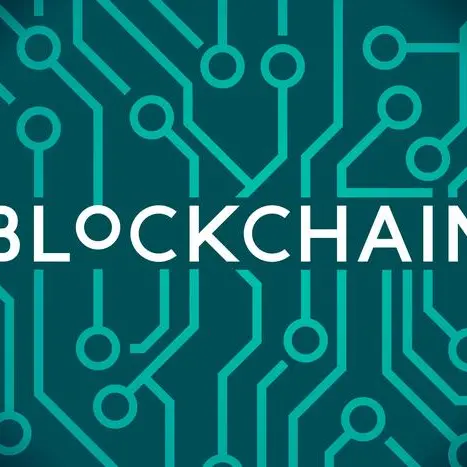- London School of Economics predicts move towards connected aircraft will transform aviation airline operations and safety into a strategic asset
- Connected aircraft could lead to 2.5% reduction in fuel burn per flight, equating to 21.3 million tonnes of CO2 annually
- Connectivity has the power to save airlines $11 billion each year by reducing the impact and likelihood of delays, cancellations and diversions
The connected aircraft, enabled by satellite communications, has the potential to save airlines $15 billion annually in operational efficiencies and 21.3 million tonnes of CO2 emissions by 2035, according to first-of-its-kind research from the London School of Economics and Political Science (LSE) in association with Inmarsat (LSE: ISAT.L), the world’s leading provider of global, mobile satellite communications.
Analysing current IATA data and primary research including industry interviews with airlines, regulatory agencies, developers and suppliers of aircraft equipment and software solutions, Sky High Economics: Evaluating the Economic Benefits of Connected Airline Operations examines a wide range of efficiencies enabled by the connected aircraft, and their associated benefits.
These efficiencies include fuel savings, a reduction in delays, innovations in maintenance processes, air traffic management enhancements, safety improvements and others. Based on current connected aircraft numbers, the research finds that together these efficiencies can generate up to a 1% reduction in the $764 billion spent by airlines each year in operating costs worldwide[1]. This equates to 20% of the forecast global aviation industry net profit in 2018 ($38.4 billion).[2] As the adoption of connected aircraft is set to rise exponentially, this cost saving is expected to double, saving airlines up to $15 billion globally by 2035.
Fuel savings and reducing environmental impact
Today, the airline industry is experiencing a period of exceptional growth, but the forecast doubling of air traffic by 2035[3] will require a more efficient use of assets to reduce fuel and CO2 emissions, and increase airspace capacity while assuring safety. Optimising flight routes in real time, through IP-enabled communications that provide better weather information to the cockpit, yields an estimated 1% fuel reduction per flight. This equates to 3.39 billion litres of fuel, 8.3 million tonnes of CO2 and $1.3 billion in fuel costs annually[4]. Adding savings accruing in other areas, enabled by enhanced communication to and from the cockpit, fuel efficiencies of 2.5% could be achieved: an annual reduction of 8.5 billion litres and 21.3 million less tonnes of CO2. To put this into context, the current IATA global target for reducing CO2 emissions is an improvement in fuel efficiency of 1.5% per year.
Predictive maintenance reduces turnaround times
Reducing turnaround times and preventing aircraft on ground (AOG) through predictive maintenance is a key priority for airlines; unplanned maintenance is responsible for approximately half of flight delays. Globally, airlines spent $62.1 billion in maintenance, repair and operations costs in 2016, a figure set to reach $90 billion by 2024[5]. The connected aircraft utilises real time data to create a live electronic tech log, in which flight performance data is digitally integrated with maintenance suppliers, allowing airlines and advanced algorithms to identify any maintenance required before the aircraft arrives at its destination. This research forecasts that if such technology halved maintenance costs, it could deliver annual cost savings of $5.6 billion.
Cutting flight delays
Global flight delays are estimated to cost the industry $123 billion each year[6], with weather responsible for nearly 70% of all delays[7]. Through improved navigation capabilities, the connected aircraft’s ability to avoid adverse weather and hazardous conditions could deliver annual cost savings of US$1.3 billion[8]. In addition, crew scheduling is currently responsible for 3% of delays[9]; a 66% reduction in such delays through enhanced connectivity could generate an additional $2.4 billion in annual savings. Where connectivity is fully utilised in disruption management to reduce the impact of delays, cancellations and diversions and enhance predictive maintenance, annual savings have potential to reach $11 billion.
Revolutionising air traffic management
As a result of enhanced satellite connectivity, significant change is underway in air traffic control (ATC) services. IP-enabled, secure real-time data exchange between aircraft and ATC is improving surveillance capabilities and reducing separation minima, allowing airspace to accommodate increasing passenger numbers and an increasing variety of aircraft. The benefits of migrating current radar-based systems to satellite-based navigation, automating aircraft position reporting and providing digital datalink communication between pilots and air traffic controllers could revolutionise air traffic management and save an estimated $3 billion annually.[10]
Dr Alexander Grous (B. Ec, MBA, M.Com, MA, PhD.), Department of Media and Communications, LSE and author of Sky High Economics said: “The forecast doubling of aircraft in the skies by 2035 will create both challenges and opportunities for the global aviation industry. IP-enabled aircraft are an essential step in facilitating growing demand for air travel, while meeting vital safety requirements. The study’s findings highlight not only the powerful commercial efficiencies for airline operations, but crucially, the resulting advantages for safety and environmental impact.”
Frederik van Essen, Senior Vice President, Market and Business Development, Inmarsat Aviation, commented: “This report demonstrates that the connected aircraft is a shrewd commercial decision; unrivalled access to real-time data is reducing airlines’ bottom-line operating costs while reducing emissions and improving safety. Not only that, enhanced connectivity is becoming an operational necessity as our skies become busier. With finite airspace available to accommodate increasing passenger numbers, airlines need to act now and consider the technology and infrastructure they need to future-proof their operations.”
Inmarsat is playing a key part in the digitisation of the aviation industry. Earlier this year, Inmarsat’s SB-S entered commercial service as the first and only global aviation broadband solution for operations and safety communications. SB-S allows airlines to utilise rich, real-time data to drive decision-making, improve operational efficiency and assure the highest levels of safety in the skies. SB-S delivers revolutionary new capabilities to the flight deck through the Electronic Flight Bag (EFB), from real-time weather reports to inflight aircraft health and performance monitoring.
-Ends-
For further information
Jonathan Sinnatt
Director of Corporate Communications
+44 (0)20 7728 1935
Robeel Haq
Senior PR Manager and Social Media, Aviation
+44 (0)20 7728 1352
About Sky High Economics
Sky High Economics is the first research project to comprehensively model the socio-economic impact that the connectivity revolution in the air is set to have.
This report is the second instalment in the Sky High Economics series. It follows a first chapter exploring the revenue and economics of inflight passenger connectivity and precedes the final chapter of the report, which will look at the impact of passenger connectivity on loyalty and behaviour.
The full Sky High Economics report is available to download here: www.inmarsataviation.com/skyhigh2
About Inmarsat
Inmarsat is the leading provider of global mobile satellite communications services. Since 1979, Inmarsat has been providing reliable voice and high-speed data communications to governments, enterprises and other organisations, with a range of services that can be used on land, at sea or in the air. Inmarsat operates around the world, with a presence in the major ports and centres of commerce on every continent. Inmarsat is listed on the London Stock Exchange (ISAT.L). For more information, please visit www.inmarsat.com .
The Inmarsat press release newsfeed and corporate updates are on @InmarsatGlobal.
About LSE
The London School of Economics and Political Science (LSE) is one of the foremost social science universities in the world. LSE is a specialist university with an international intake and a global reach. Its research and teaching span the full breadth of the social sciences, from economics, politics and law to sociology, anthropology, accounting and finance. Founded in 1895, the School has an outstanding reputation for academic excellence. 16 Nobel Prize winners have been LSE staff or alumni. The School has a cosmopolitan student body, with around 9,500 full time students from 140 countries. LSE has a staff of over 3,000, with about 46 per cent drawn from countries outside the UK.
© Press Release 2018Disclaimer: The contents of this press release was provided from an external third party provider. This website is not responsible for, and does not control, such external content. This content is provided on an “as is” and “as available” basis and has not been edited in any way. Neither this website nor our affiliates guarantee the accuracy of or endorse the views or opinions expressed in this press release.
The press release is provided for informational purposes only. The content does not provide tax, legal or investment advice or opinion regarding the suitability, value or profitability of any particular security, portfolio or investment strategy. Neither this website nor our affiliates shall be liable for any errors or inaccuracies in the content, or for any actions taken by you in reliance thereon. You expressly agree that your use of the information within this article is at your sole risk.
To the fullest extent permitted by applicable law, this website, its parent company, its subsidiaries, its affiliates and the respective shareholders, directors, officers, employees, agents, advertisers, content providers and licensors will not be liable (jointly or severally) to you for any direct, indirect, consequential, special, incidental, punitive or exemplary damages, including without limitation, lost profits, lost savings and lost revenues, whether in negligence, tort, contract or any other theory of liability, even if the parties have been advised of the possibility or could have foreseen any such damages.










